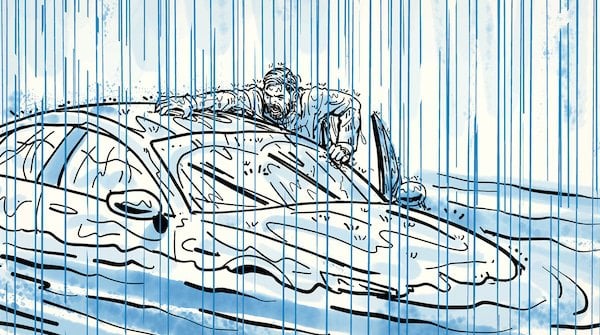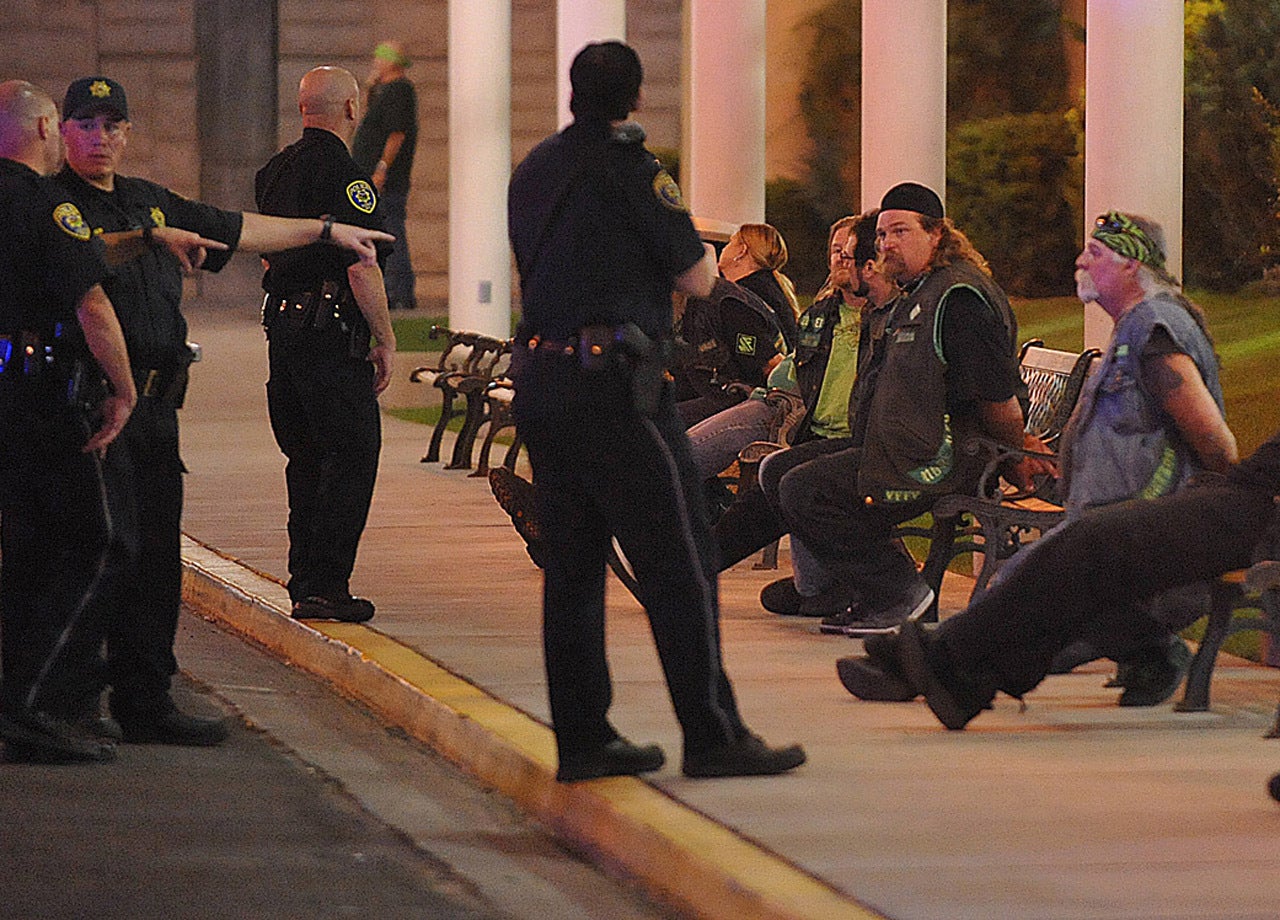How To Survive A Flash Flood Emergency: Essential Safety Measures

Table of Contents
Understanding Flash Flood Risks and Warning Signs
Flash floods are characterized by a rapid, sudden rise in water levels, often with little or no warning. Unlike regular floods that develop gradually, flash floods can overwhelm an area in minutes, leaving little time for escape. Understanding the causes and warning signs is the first step in flash flood safety.
Common causes of flash floods include:
- Intense, localized rainfall: Heavy downpours, particularly in mountainous or arid regions, can quickly overwhelm drainage systems.
- Dam or levee failures: Breaches in man-made structures designed to control water flow can release massive volumes of water downstream.
- Sudden melting of snow or ice: Rapid snowmelt, especially during warmer periods or after heavy snowfall, can lead to flash flooding in river systems.
Recognizing the warning signs is vital for your safety. These signs can include:
- A sudden, rapid rise in water levels: Noticeably increased water flow in creeks, streams, or rivers.
- Rapidly flowing water: Water moving much faster than normal, carrying debris and sediment.
- Heavy rainfall in your area: Persistent and intense rainfall is a major precursor to flash floods.
- Official warnings from weather services: Pay close attention to weather alerts and advisories issued by your local meteorological agency. These warnings are crucial in flash flood preparedness.
Staying informed through weather alerts, local news broadcasts, and official emergency channels is paramount in mitigating flash flood risks.
Creating a Family Emergency Plan for Flash Floods
A well-defined family emergency plan is critical for surviving a flash flood. This plan should outline clear procedures for communication, evacuation, and post-flood actions.
Key components of your flash flood emergency plan include:
- Designated meeting place: Identify a safe meeting point outside the potential flood zone where family members can regroup after evacuation.
- Communication protocols: Establish primary and secondary contact methods, including cell phones, emergency contacts, and a pre-arranged meeting place.
- Evacuation routes: Plan multiple evacuation routes, considering potential road closures and alternative pathways to higher ground. Keep your emergency kit readily accessible.
- Emergency kit: Prepare a well-stocked kit containing essential supplies, such as:
- Water (at least one gallon per person per day) and non-perishable food.
- First-aid kit with essential medications.
- Flashlight with extra batteries or a hand-crank radio.
- Important documents (insurance policies, identification) in waterproof containers.
- Regular practice: Regularly review and practice your family's flash flood emergency plan to ensure everyone knows what to do in case of a real emergency. Practice drills to make it second nature.
Immediate Actions During a Flash Flood Emergency
Your actions during a flash flood are critical. Your response differs depending on whether you're indoors or outdoors.
If you are indoors:
- Move to higher ground within the building: If possible, relocate to an upper floor or higher elevation within your home.
- Stay away from windows and doors: Avoid areas prone to damage from debris and potential flooding.
- Turn off utilities if instructed: Follow instructions from authorities concerning gas and electricity.
- Monitor the situation: Stay updated on weather reports and emergency alerts. Heed any mandatory evacuation orders immediately.
If you are outdoors:
- Seek higher ground immediately: Get to a safe elevation as quickly as possible. Avoid low-lying areas, canyons, washes, or areas near streams or rivers.
- Do not attempt to drive or walk through flood waters: Floodwaters can be deceptively strong and swift, capable of sweeping vehicles and people away. Even a few inches of fast-moving water can knock you off your feet.
- If your vehicle is caught in rising water, abandon it immediately: Get out of the car and seek higher ground. Your safety is paramount.
- Report your location to emergency services: If you can safely do so, contact emergency services to inform them of your location and situation.
Post-Flash Flood Safety Precautions
Even after the floodwaters recede, dangers persist. Post-flash flood safety measures are essential.
- Avoid floodwaters: Floodwaters can be contaminated with sewage, chemicals, and debris, posing health risks.
- Inspect your home for damage: Check for structural issues before re-entering your home.
- Report damage to local authorities: Contact your local emergency services to report any damage to your property and infrastructure.
- Be aware of disease risks: Take precautions against waterborne diseases and other health hazards.
- Seek professional help: Hire licensed professionals for cleanup and repairs to ensure safety and structural integrity.
Remember that water damage can present hidden dangers.
Conclusion
Surviving a flash flood emergency requires a combination of understanding the risks, developing a comprehensive plan, taking decisive action during the event, and exercising caution afterward. Preparedness is your best defense. By understanding flash flood risks and warning signs, creating a detailed family emergency plan, taking swift and decisive action during a flash flood, and following post-flood safety measures, you significantly increase your chances of survival. Develop your own flash flood emergency plan today, share this vital information with your family and neighbors, and help build a safer community. Being prepared for a flash flood emergency can save lives, making flash flood safety a priority for everyone. Invest time in flash flood preparedness – it's an investment in your life and the lives of those you love.

Featured Posts
-
 Making The Escape To The Country A Reality A Step By Step Plan
May 25, 2025
Making The Escape To The Country A Reality A Step By Step Plan
May 25, 2025 -
 South Florida Flash Flood Warning Heavy Rainfall And Urgent Safety Advice
May 25, 2025
South Florida Flash Flood Warning Heavy Rainfall And Urgent Safety Advice
May 25, 2025 -
 Tuukka Taponen F1 Debyytti Jo Taenae Vuonna Jymypaukku Laehellae
May 25, 2025
Tuukka Taponen F1 Debyytti Jo Taenae Vuonna Jymypaukku Laehellae
May 25, 2025 -
 Understanding Kyle Walkers Actions Following Annie Kilners Return Home
May 25, 2025
Understanding Kyle Walkers Actions Following Annie Kilners Return Home
May 25, 2025 -
 Kyle Walkers Night Out Annie Kilner Steps Out Solo
May 25, 2025
Kyle Walkers Night Out Annie Kilner Steps Out Solo
May 25, 2025
Latest Posts
-
 Hells Angels Mourn Member Killed In Motorcycle Crash
May 25, 2025
Hells Angels Mourn Member Killed In Motorcycle Crash
May 25, 2025 -
 Italian Open Alcaraz And Sabalenkas Winning Starts
May 25, 2025
Italian Open Alcaraz And Sabalenkas Winning Starts
May 25, 2025 -
 Alcaraz And Sabalenka Triumph In Italian Open Debut
May 25, 2025
Alcaraz And Sabalenka Triumph In Italian Open Debut
May 25, 2025 -
 Carlos Alcaraz And Aryna Sabalenka Dominate At The Italian Open
May 25, 2025
Carlos Alcaraz And Aryna Sabalenka Dominate At The Italian Open
May 25, 2025 -
 Arrest Of Dave Turmel Canadas Most Wanted In Italy
May 25, 2025
Arrest Of Dave Turmel Canadas Most Wanted In Italy
May 25, 2025
